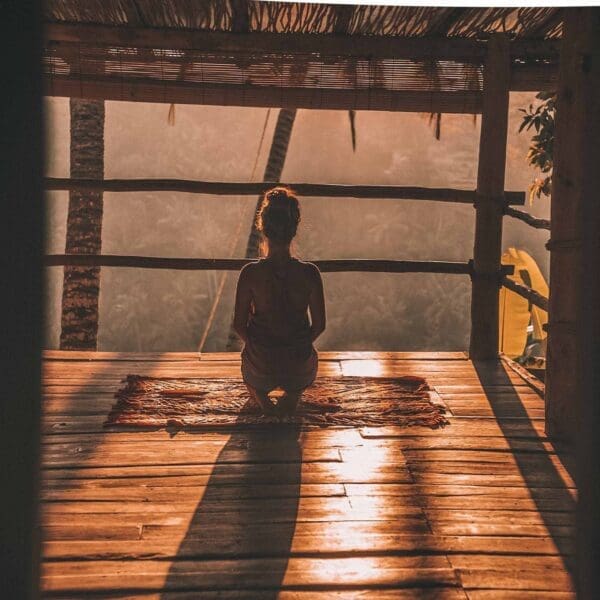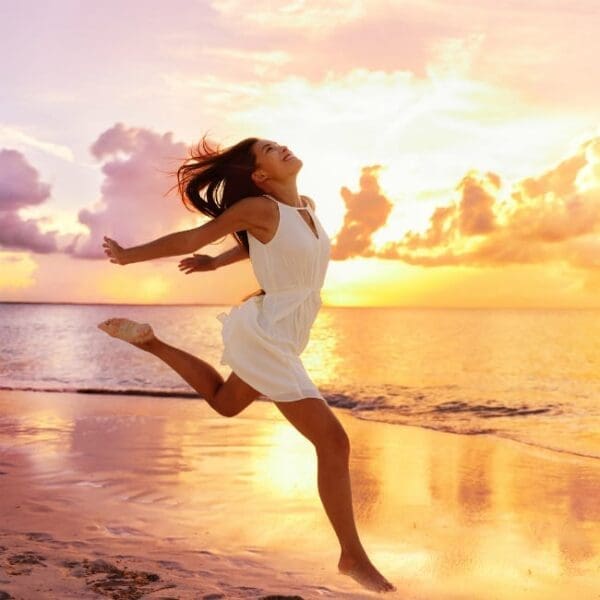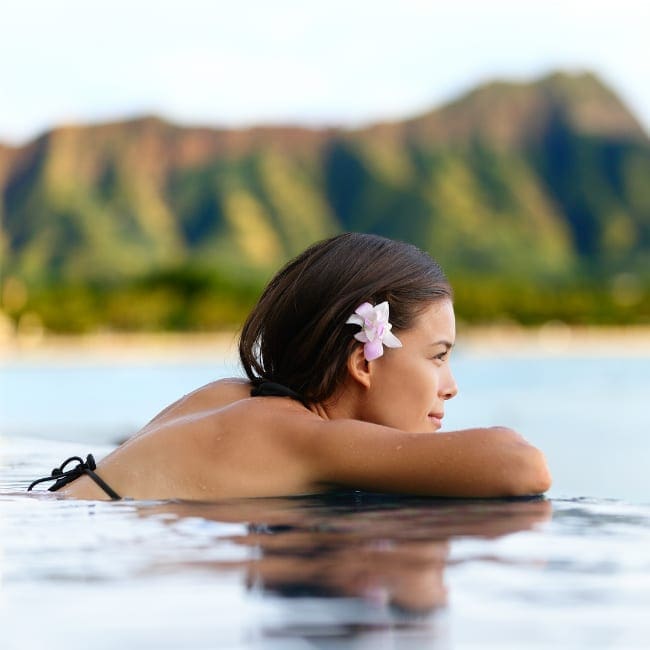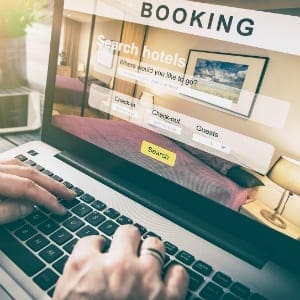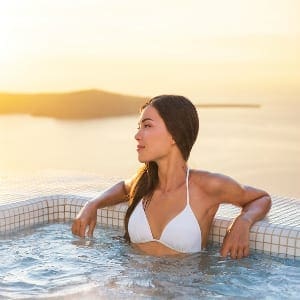 Celebrating its first-year anniversary, and following the release of its first survey on Wellness Vacations, the Wellness Tourism Association (WTA) polled its members to find out the top wellness travel trends for 2019.
Celebrating its first-year anniversary, and following the release of its first survey on Wellness Vacations, the Wellness Tourism Association (WTA) polled its members to find out the top wellness travel trends for 2019.
With the burgeoning popularity of wellness travel on a global basis – the Global Wellness Institute predicts the wellness tourism sector will reach close to $1 trillion U.S. on a global level by the year 2020 – the WTA predicts growth for the following five trends:
1. Going solo
The going solo trend that many of our members are witnessing supports the results of the WTA’s recent Wellness Vacation survey in which close to 25% of respondents reported a preference for solo travel. At Fairmont Chateau Lake Louise in Banff National Park, Alberta, Davina Bernard, Director of Wellness, tells us that 50% of their wellness package guests are women traveling solo, a figure that increases to 75% for three- and four-night retreats.
At Canyon Ranch resorts in Lenox, Massachusetts and Tucson, Arizona, President and COO Thomas Klein says, “half of our guests are solo travelers, and many of them are seeking an immersive, self-reflective experience.”
While the integrative wellness brand historically skews higher with female guests, in general, Klein points out an increase in solo male travelers desiring to regain a sense of purpose and focus on self-care.
Tammy Petersen of Chicago-based Retreats Unlimited says, “Our retreats are mostly luxury, so while we thought that people would travel together to save money, we are seeing so many solo travelers – especially women.”
Petersen elaborated that when her team asked clients why they came alone, the prevailing response was that they were taking control of their health and wanted their journeys to be private and personal.
“Even when they ask friends to join them,” says Petersen, “they never share rooms.”
2. Rise in newcomers
“In 2018, approximately 50% of our guests were new to Pritikin,” says Jennifer Weinberg, Director of Marketing Communications at the Miami wellness retreat. She says that with the ease of spreading the word via social media, coupled with a rising interest in health and wellness travel, “we believe that this trend is here to stay.”
At Canyon Ranch resorts, “new guests make up nearly 50% of our business,” says Klein. “We’ve observed this growing trend over the last few years, and it appears to be continuing strong.”
Bernard reports that “95% of the people who attend all-inclusive retreats at Fairmont Chateau Lake Louise have never attended a wellness retreat before.”
Supporting this trend, over 60% of WTA Survey respondents indicated that they had never taken a Wellness Vacation as they themselves described, but hoped to do so in the near future and wanted more information.
3. Greater flexibility with length of stays
Members are seeing demand for a wider range of durations for retreats and programs. Kathleen LeSage, co-owner of the 40-year-old New Life Hiking Spa in Killington, Vermont, says that over the past three years, the number of guests that have stayed longer than two weeks has increased by 90%.
She says, “the trend to longer stays prompted us to add the 21-night wellness retreat launched in 2017.” Simultaneously, Canyon Ranch has seen a decrease in guests’ average length of stay, as customers, says Klein, “are seeking shorter and more frequent trips.”
Hilton Head Health’s senior VP of Sales and Marketing Jessica Brantley says that while “annual visits” have been popular for years, guests are now planning out shorter, more frequent trips (two to four times per year) to stay on track, while others are dedicating resources to commit to an 8- to 12-week stay to make a significant and efficient impact on their health. She has also observed that while such bookings might have once been considered impulsive trips to, perhaps, drop a few pounds, H3 has found guests to be more structured and intentional with their wellness travel plans of late.
“Twenty percent of guests at Hilton Head Health plan their next visits before they leave”, she says.
4. Mental health matters
Petersen of Retreats Unlimited says this might be the most “exciting trend for us.”
She is seeing more of her retreat participants totally shut down for a few days, and when this happens, “there are often tears, deep conversations, and expressed feelings that they are not the only ones going through something.”
She says they come for yoga and fitness, but leave with a better sense of their own mental health.
Bernard says her wellness guests “might have been searching for ‘yoga retreats’ online, but it is the content around ‘mindfulness’ and how to live your best life that they tell us is the best part of our retreats.”
In response to demand from guests for more mindfulness education, Pritikin has added a licensed psychologist to its roster of medical experts which, according to Weinberg, “will not only increase the availability of one-on-one mental health consultations, but add new lectures, including Mindset Maintenance covering strategies to stay on track and prevent reversion to unhealthy habits.”
And, at Kamalaya Wellness Sanctuary in Koh Samui, Thailand, co-founder Karina Stewart is also seeing an increasing number of guests who desire to address their mental health and wellbeing, along with their physical health.
5. Demand for specific solutions and increasing awareness of value proposition
Consumers are becoming more aware of the value associated with a true wellness vacation that is planned with a specific goal and carefully researched to ensure the right fit prior to booking.
At Kamalaya, Stewart has witnessed “more guests coming from all over the world because they are dealing with stress and stress-related symptoms due to their fast-paced lifestyles.”
She is seeing an increasing number of travelers looking for health solutions and a results-focused approach to such health concerns as stress management, insomnia, and achieving a healthy weight.
She says, “the vast majority of guests come to Kamalaya with a goal in mind, whether it’s clearly defined (e.g. stress, detox or fitness) or less defined such as a need to reset internally (e.g. to address difficult life changes back home, relationship breakup, change of job, or emotional imbalance due to the loss of a loved one, perhaps). Some want to re-establish better lifestyle habits, eliminate some unhealthy habits, and fulfill the need to reset themselves.”
Over the years, she says they’ve seen a growing number of guests experiencing pain, discomfort and other symptoms related to physical misalignment. Just this past November, she adds, Kamalaya introduced a new Structural Revival wellness program to help guests find solutions.
At Eupepsia Wellness Center in Bland, Virginia, co-founder Shivani Schneider says solution-based programs are most in demand, in particular the four- to seven-day (and longer) De-stress & Relax retreats, closely followed by Customized Weight Management retreats.
She adds that “through personal assessments of each guest, we also became aware that many of them suffer from some type of sleep disorder, which is the direct result of imbalances in the body – and our programs are specifically tailored to help find solutions by addressing imbalances at their root cause.”
Klein reports that Canyon Ranch is “experiencing a phenomenon where people spanning various demographics and psychographics are increasingly seeking a healthy, vibrant and balanced lifestyle.”
He says that when Canyon Ranch opened 40 years ago, no one knew what wellness meant.
Now, he says, “consumers understand it, value it and, increasingly, expect and demand it at home, in the workplace and on vacation.”


